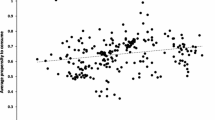Abstract
This paper empirically examines the impact of income inequality on the average propensity to consume using data for 79 Russia’s regions for the period of 2002–2020. Using several alternative specifications for the APC and econometric methods, we find that the average propensity to consume is higher in regions with higher income inequality, regardless of the estimation method. This result is consistent with some previous studies, for example, for US and cross-country data. We add GRP per capita, inflation and the share of population over the working age in the estimated model to control the impact of other factors on the average propensity to consume in the region. The positive impact of income inequality on the average propensity to consume obtained for Russia’s regions could be related, firstly, to a large share of consumption in the income of the rich, and secondly, to the mechanism of the relative income hypothesis. This study reveals another negative consequence of increasing income inequality in Russia, namely the growing average propensity to consume among regions.


Similar content being viewed by others
Notes
Regions of Russia. Socioeconomic Indicators. 2021, Moscow: Rosstat, 2021, pp. 198–199, 242–243.
Regions of Russia. Socioeconomic Indicators. 2021, Moscow: Rosstat, 2021, pp. 232–233.
Regions of Russia. Socioeconomic Indicators. 2021, Moscow: Rosstat, 2021, pp. 458–459.
Unified interdepartmental information and statistical system. Consumer price indices for goods and services. https://www.fedstat.ru/indicator/31074.
Regions of Russia. Socioeconomic Indicators. 2021, Moscow: Rosstat, 2021, pp. 55–56.
The borders of Russia are considered in accordance with the Constitution of the Russian Federation adopted by popular vote on December 12, 1993, with amendments approved during the All-Russian vote on July 1, 2020.
REFERENCES
Aguiar, M. and Bils, M., Has consumption inequality mirrored income inequality?, Amer. Econ. Review, 2015, vol. 105, no. 9, pp. 2725–2756.
Alvarez-Cuadrado, F. and Long, N. V., Envy and inequality, Scand. J. Econ., 2012, vol. 114, no. 3, pp. 949–973.
Apergis, N., Simo-Kengne, B. and Gupta. R., The long-run relationship between consumption, house prices, and stock prices in South Africa: Evidence from provincial-level data, J. Real Estate Liter., 2014, vol. 22, no. 1, pp. 83–99.
Atems, B. and Jones, J., Income inequality and economic growth: A panel VAR approach, Empirical Econ., 2015, vol. 48, no. 4, pp. 1541–1561.
Blinder, A.S., Distribution effects and the aggregate consumption function, J. Polit. Econ., 1975, vol. 83, no. 3, pp. 447–475.
Cook, C.J., Savings rates and income distribution: Further evidence from LDCs, App. Econ., 1995, vol. 27, no. 1, pp. 71–82.
Cuaresma, J.C., Kubala, J. and Petrikova, K., Does income inequality affect aggregate consumption? Revisiting the evidence, Empirical Econ., 2018, vol. 55, no. 2, pp. 905–912.
Davidson, J.E.H. et al. Econometric modeling of the aggregate time-series relationship between consumers’ expenditure and income in the United Kingdom, Econ. J., 1978, pp. 661–692.
Deaton, A., Involuntary saving through unanticipated in-flation, Amer. Econ. Rev., 1977, vol. 67, no. 5, pp. 899–910.
De Bonis, R. and Silvestrini, A., The effects of financial and real wealth on consumption: New evidence from OECD countries, Appl. Fin. Econ., 2012, vol. 22, no. 5, pp. 409–425.
Della Valle, P.A. and Oguchi, N., Distribution, the aggregate consumption function, and the level of economic development: Some cross-country results, J. Polit. Econ., 1976, vol. 84, no. 6, pp. 1325–1334.
Dorofeev, M.L., Economic inequality in Russia: Problems and ways of their solution, Vestn. Univ., 2020, no. 9, pp. 85–93.
Duesenberry, J.S., Income, Saving and the Theory of Consumer Behavior, Cambridge, MA: Harvard Univ. Press, 1949.
Dvornak, N. and Kohler, M., Housing wealth, stock market wealth and consumption: A panel analysis for Australia, Econ. Record, 2007, vol. 83, no. 261, pp. 117–130.
Frank, R.H., Levine, A.S. and Dijk, O., Expenditure cascades, Social Science Research Network Working Paper, 2010.
Jappelli, T. and Pistaferri, L., Fiscal policy and MPC heterogeneity, Amer. Econ. J.: Macroeconomics, 2014, vol. 6, no. 4, pp. 107–136.
Khan, A. H., Aggregate consumption function and income distribution effect: Some evidence from developing countries, World Dev., 1987, vol. 15, no. 10–11, pp. 1369–1374.
Krueger, D. and Perri, F., Does income inequality lead to consumption inequality? Evidence and theory, Rev. Econ. Stud., 2006, vol. 73, no. 1, pp.163–193.
Lakman, I.A., Timiryanova, V.M. and Popov D.V., Spatial analysis of the relationship between changes in income and consumption of the population based on panel data, Vopr. Stat., 2021, vol. 28, no. 2, pp. 128–139.
Meyer, B.D. and Sullivan, J.X., Consumption and income inequality and the great recession, Amer. Econ. Rev., 2013, vol. 103, no. 3, pp. 178–183.
Monnin, P., Inflation and income inequality in developed economies, CEP Working Paper Series, 2014.
Musgrove, P., Income distribution and the aggregate consumption function, J. Polit. Econ., 1980, vol. 88, no. 3, pp. 504–525.
Piketty, T., Capital in the Twenty-First Century, Cambridge, MA: Harvard Univ. Press, 2014.
Rhee, D.E. and Kim, H., Does income inequality increase marginal propensity to consume? Appl. Econ. Lett., 2018, vol. 25, no. 17, pp. 1218–1221.
Schmidt-Hebbel, K. and Serven, L., Does income inequality raise aggregate saving? J. Dev. Econ., 2000, vol. 61, no. 2, pp. 417–446.
Slacalek, J., What drives personal consumption? The role of housing and financial wealth, ECB Working Paper, no. 1117, 2009.
Stiglitz, J.E., Inequality and economic growth, Polit. Qaurterly, 2015, vol. 86, pp. 134–155.
Zamnius, A.V., Polbin, A.V., and Sinelnikov-Mu-rylev, S.G., The labor supply elasticity for married men in Russia, Ekon. Zh. Vysh. Shk. Ekon., 2022; vol. 26, no. 2, pp. 177–212.
Funding
The article was prepared in the framework of a research grant funded by the Ministry of Science and Higher Education of the Russian Federation (grant ID: 075-15-2022-326).
Author information
Authors and Affiliations
Corresponding authors
Ethics declarations
The authors declare that they have no conflicts of interest.
Rights and permissions
About this article
Cite this article
Ivakhnenko, T.Y., Polbin, A.V. Income Inequality and Propensity to Consume in Russia’s Regions. Reg. Res. Russ. 12, 378–385 (2022). https://doi.org/10.1134/S2079970522700204
Received:
Revised:
Accepted:
Published:
Issue Date:
DOI: https://doi.org/10.1134/S2079970522700204




